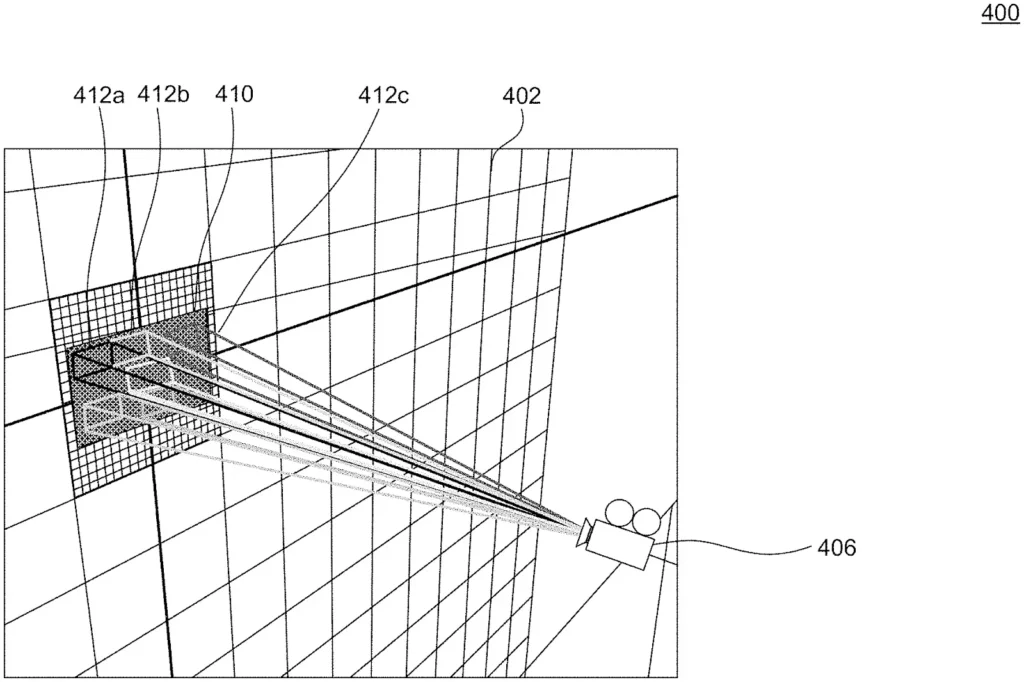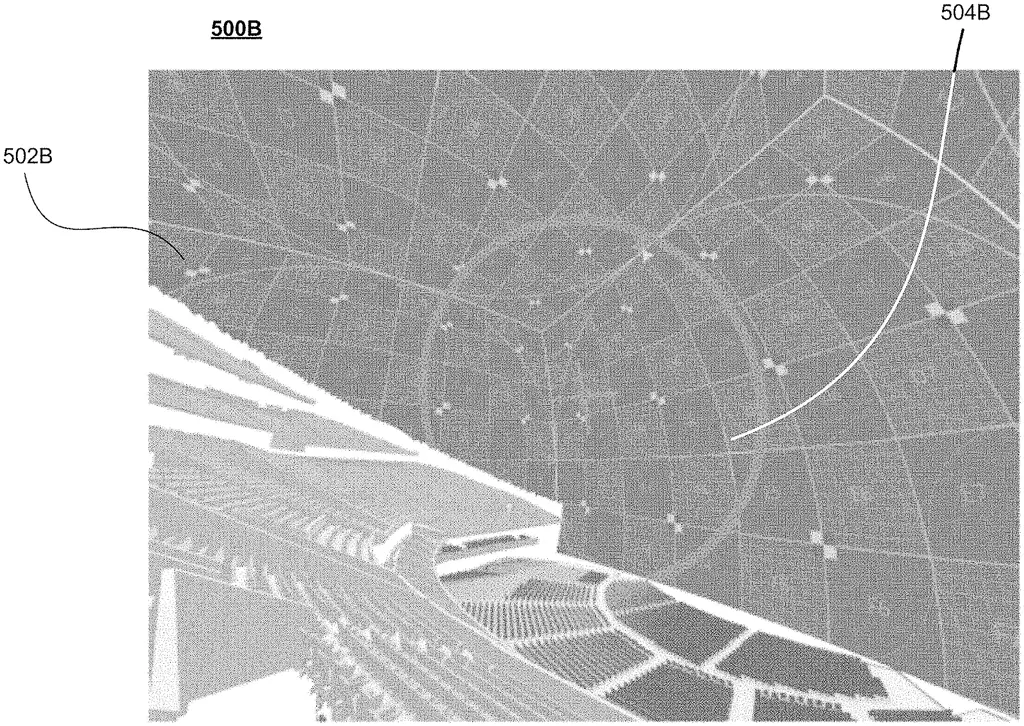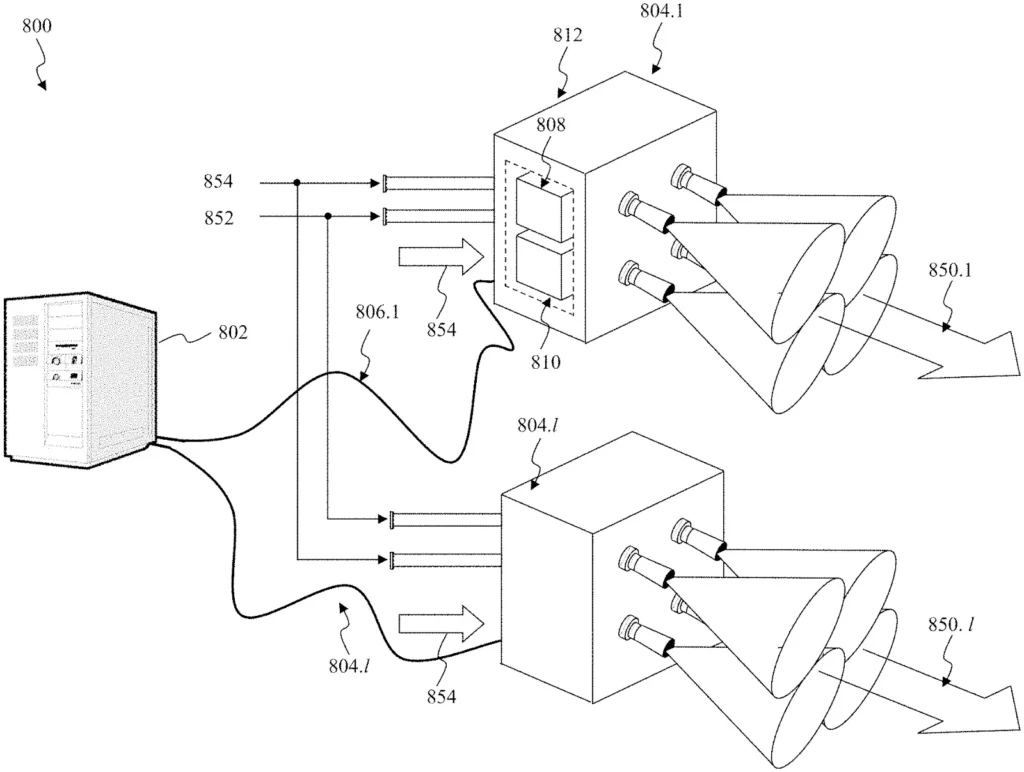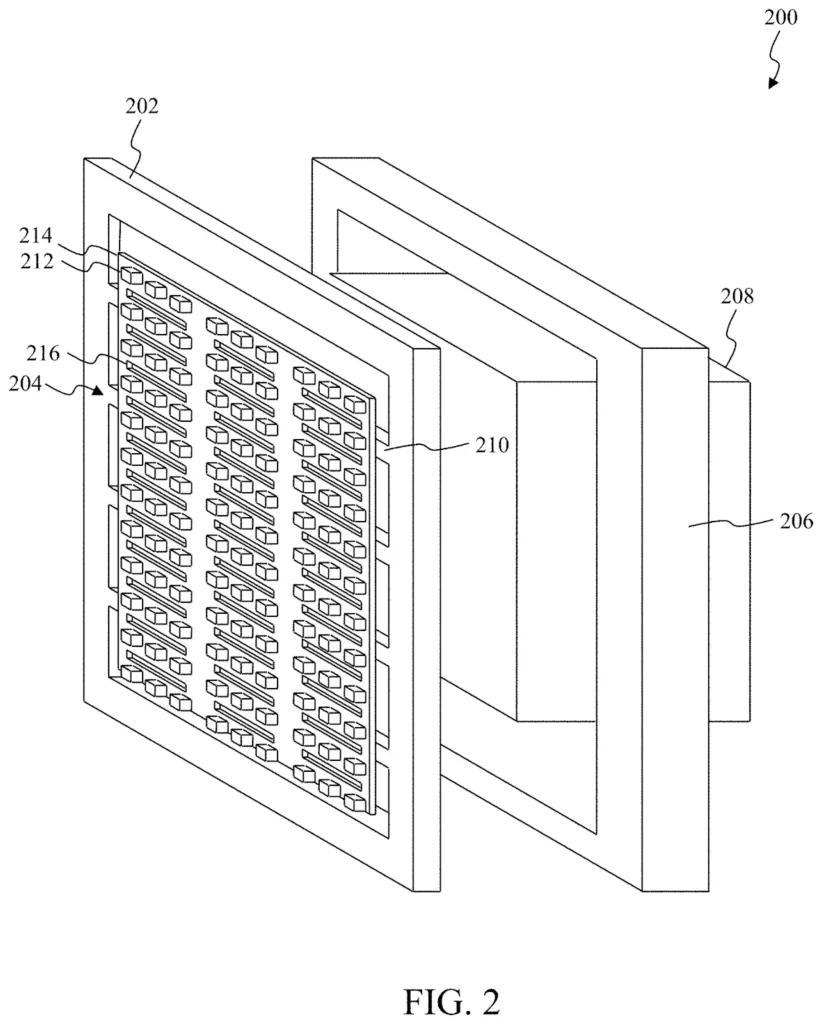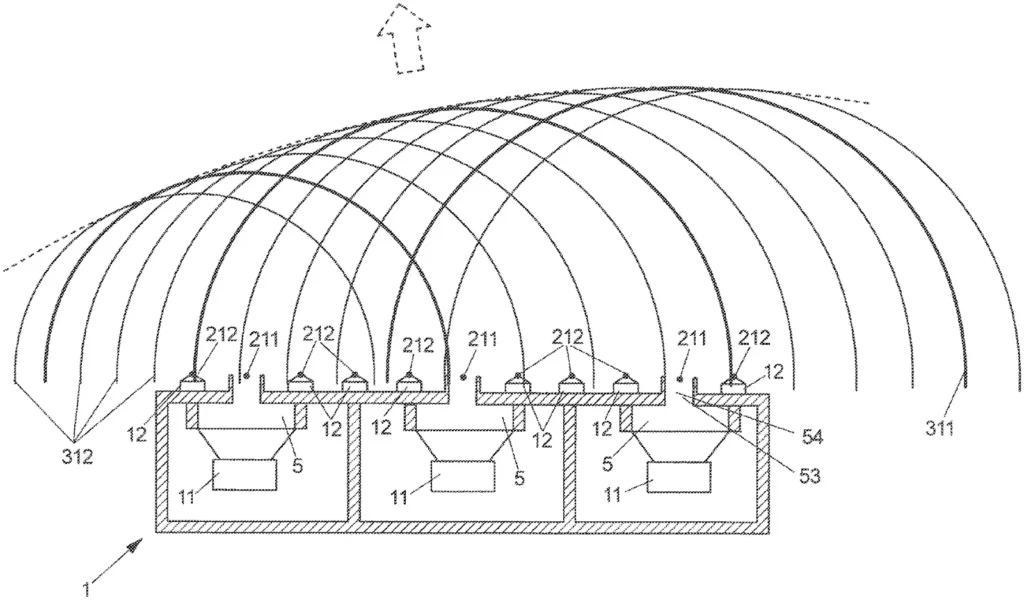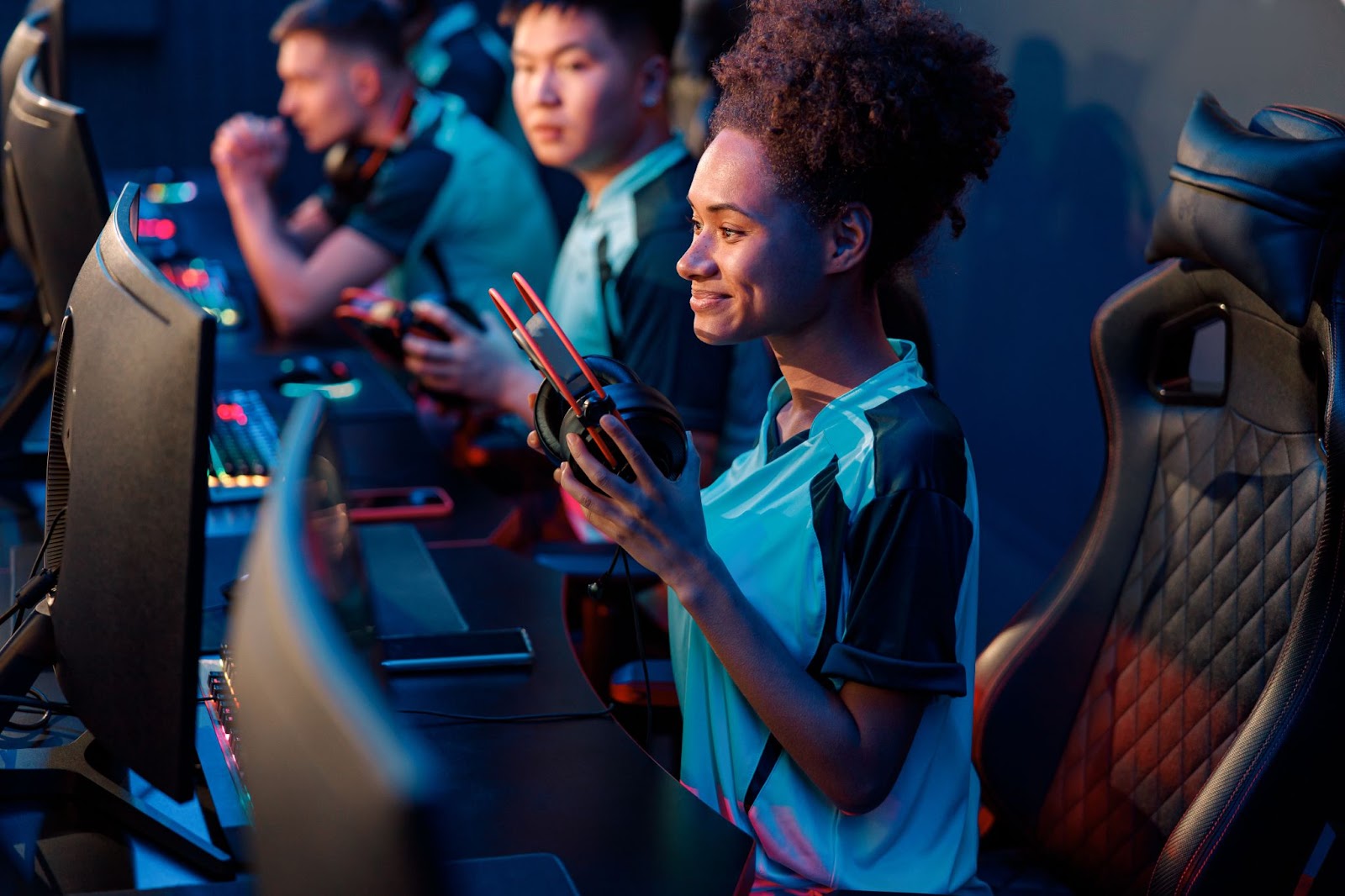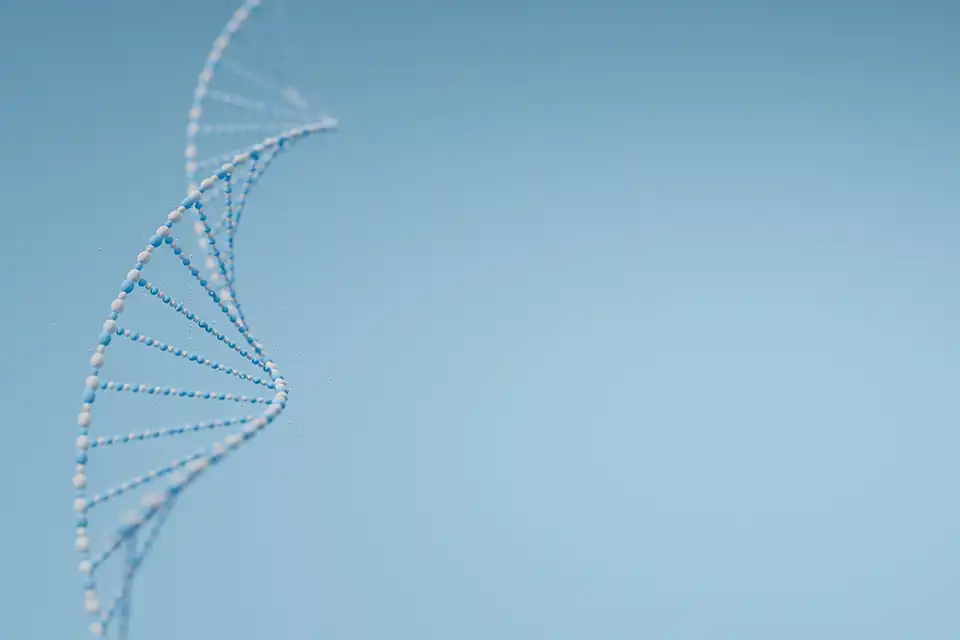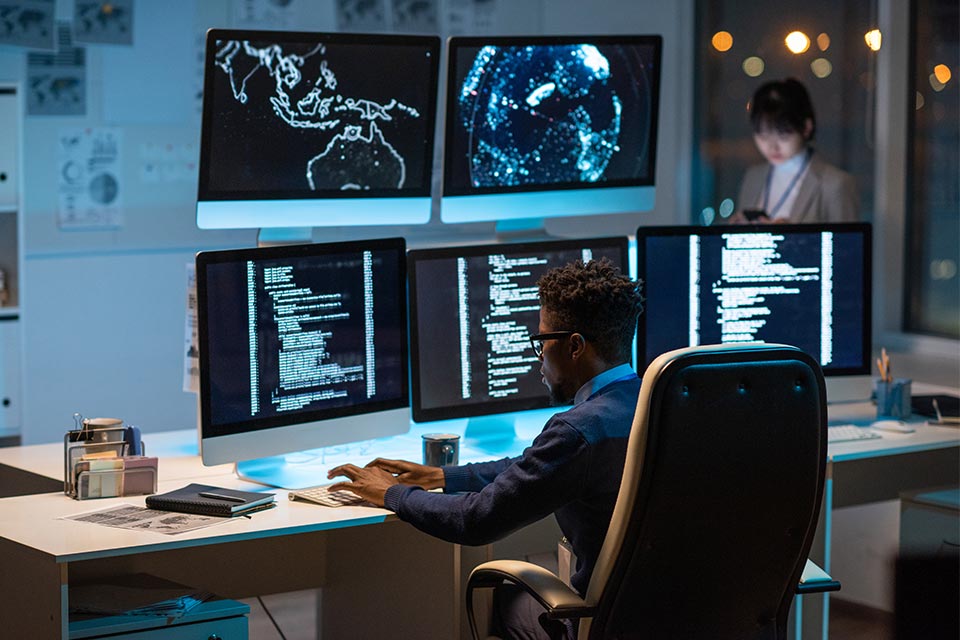The Madison Square Garden (MSG) Sphere in Las Vegas officially opened on September 29, 2023 and has been generating a lot of buzz worldwide since its announcement back in 2018. The building, which was designed by architecture firm Populous, is said to be the largest spherical structure in the world and a technological marvel in terms of engineering and entertainment systems.
In this article, we take a closer look at the company’s patenting activity and feature some of the patents behind the MSG Sphere.
MSG’s patenting activity
In an interview with Optics & Photonics News, Stuart Elby, SVP of advanced engineering at MSG Ventures, said that the company approached the scientific and technological endeavor of creating the Sphere more like a venture capital accelerator, finding and funding startups and other entities to create the technology they needed for the project. Most prominent is their collaboration with Holoplot, an audio company based in Berlin, Germany, that provided the specialized sound technology they needed for the venue.
Over the last few years, MSG Entertainment Group managed to generate a considerably large patent portfolio of over 70 patents and patent applications, most of which were filed in 2020.
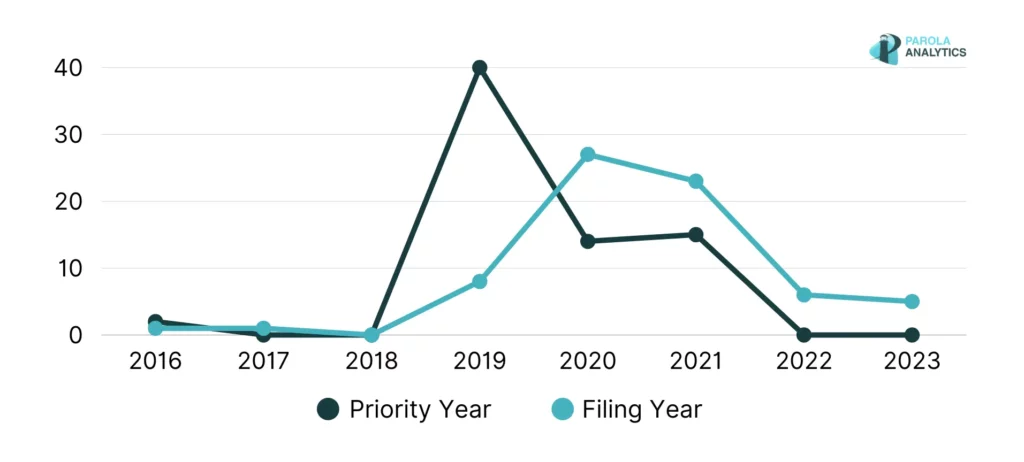
| Patent Publications | By priority year | By application year |
|---|---|---|
| 2016 | 2 | 1 |
| 2017 | 0 | 1 |
| 2018 | 0 | 0 |
| 2019 | 40 | 8 |
| 2020 | 14 | 27 |
| 2021 | 15 | 23 |
| 2022 | 0 | 6 |
| 2023 | 0 | 5 |
MSG has a total of 71 patent publications: 21 are (granted) patents, 39 are pending applications, and 11 have lapsed. Of the 11 lapsed publications, one filing titled “Virtual window system” was rejected by the USPTO on both anticipation and obviousness grounds and then subsequently abandoned.
The patents belong to 27 unique patent families, of which only one has lapsed. Apart from the US, the company also has PCT filings, Europe, Australia, Canada, China, Japan, and South Korea.
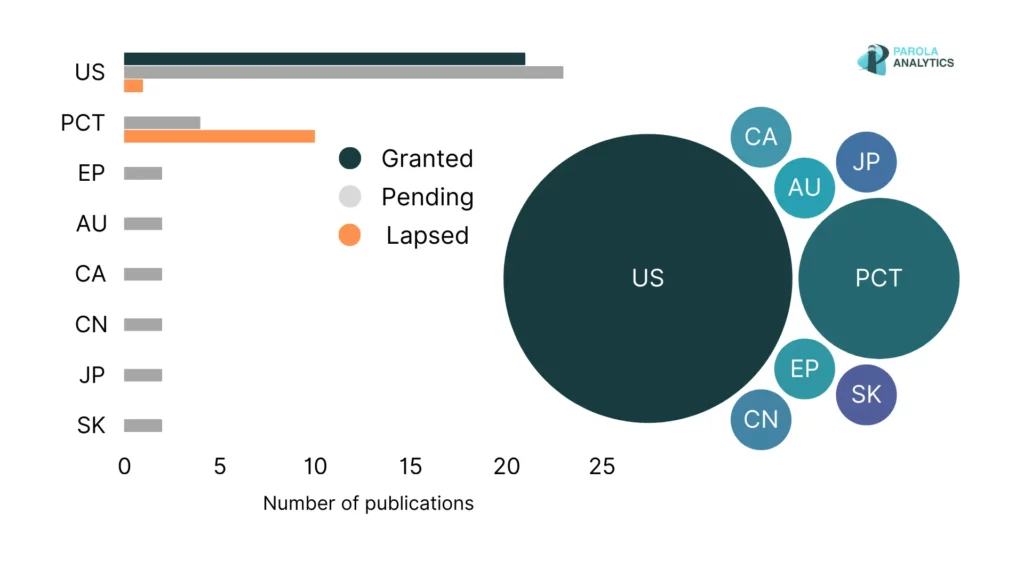
Sphere patents filed per jurisdiction
| Granted | Pending | Lapsed | Total | |
|---|---|---|---|---|
| US | 21 | 23 | 1 | 45 |
| PCT | 0 | 4 | 10 | 14 |
| EP | 0 | 2 | 0 | 2 |
| Australia | 0 | 2 | 0 | 2 |
| Canada | 0 | 2 | 0 | 2 |
| China | 0 | 2 | 0 | 2 |
| Japan | 0 | 2 | 0 | 2 |
| South Korea | 0 | 2 | 0 | 2 |
Featured Patents
Building
MSG filed for two building design patents in July 2021. Both designs feature the iconic sphere structure of the Sphere, with one showing the outside structure with a triangular mesh design and the other having the sphere’s outer surface showing a facsimile of the Earth’s surface as video content.
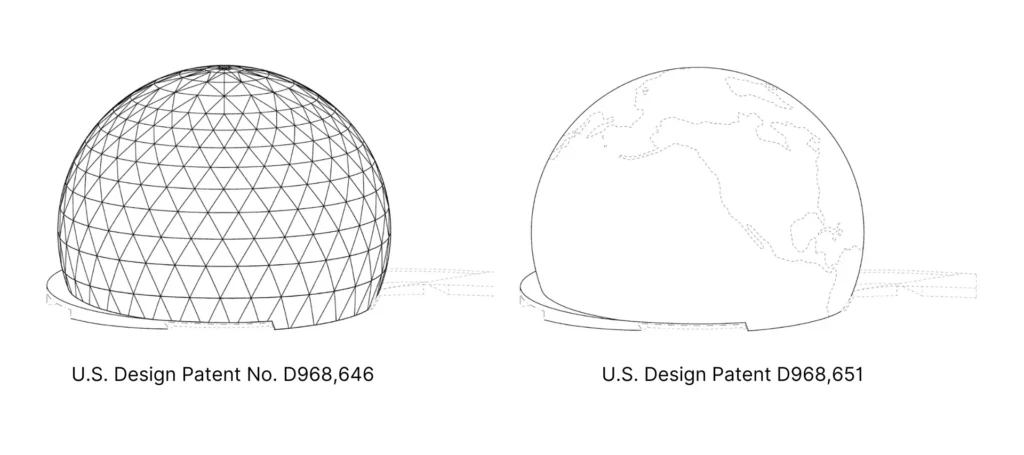
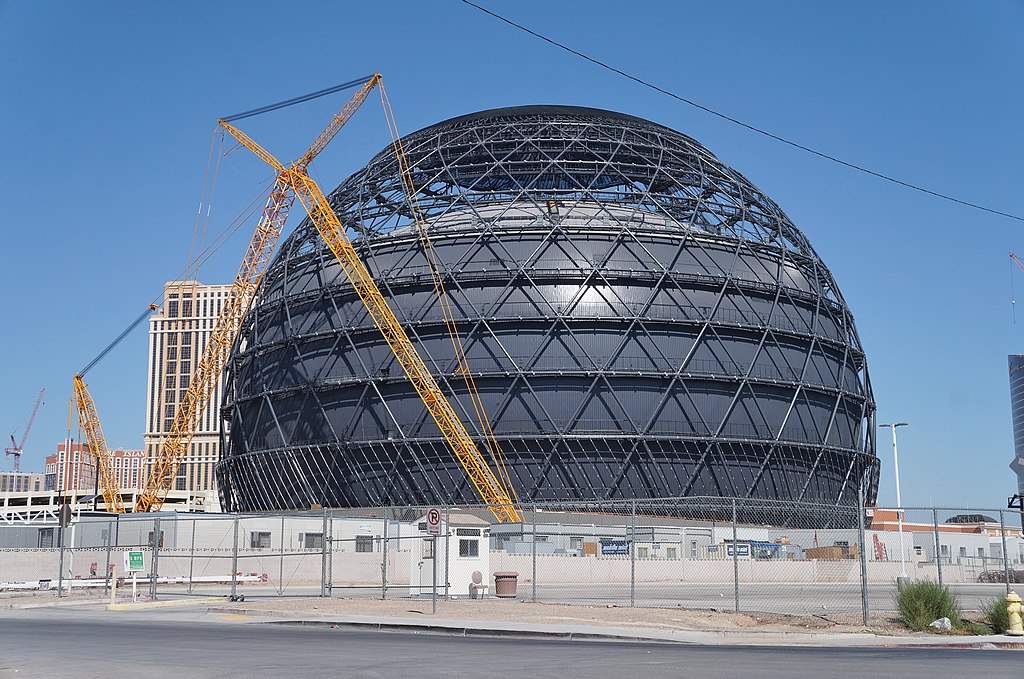
The MSG Sphere under construction, September 2022. Photograph by SounderBruce, distributed under a CC BY-SA 4.0 license.
U.S. Design Patent No. D968,646M and U.S. Design Patent D968,651 were both filed on July 21, 2021 and were both granted on November 1, 2022.
Providing a contiguous virtual space for a plurality of display devices
The Sphere is also famed for its more than hundreds of thousands of square feet of display devices which are able to cooperate with each other to render a cohesive and immersive visual experience for its visitors.
The problem. As the inventors have noted in the patent, many existing video display systems face issues with cohesiveness and synchronization across multiple display devices. There can be substantial delays in showing video content across the displays, and even when there are no noticeable delays, they may not be readily adaptable to different numbers and configurations of the display devices. Furthermore, some prior systems require huge storage and computational power for each device to display their specific video content.
The solution. Their idea then is to use “virtual windows” corresponding to the real-world display devices, doing the proper calculations and determinations (e.g., positions) in the “virtual” first before translating them to the real-world display devices so as to have a more cohesive video content presentation.
The positions of the virtual windows correlating to the real-world display devices on a display plane area are calculated based on the properties of the display devices and the virtual camera’s focal length. Once the virtual windows are placed on their respective display plane area positions, video content can then be displayed on the real-world display devices.
Given the huge number of display devices they use in the venue and with their great focus on delivering an immersive experience, the lack of cohesiveness in anything their numerous display devices are presenting would certainly be a detriment to their brand. The ‘877 patent is one of many patents that MSG filed in relation to audiovisual content and display devices in just the last few years, showing the amount of attention they gave on this aspect of the venue.
U.S. Patent No. 10,951,877 was filed on July 15, 2019 and was granted on March 16, 2021.
Providing visual guidance for presenting visual content in a venue
One unique feature of the Sphere, distinct from most other entertainment venues, is its spherical geometry, which complicates the display of content on its curved media surface. This can result in visual distortions and suboptimal viewing experiences.
The problem. Achieving the desired viewing experience for a large audience across various points on the curved surface, particularly in interactive scenarios, requires extensive computation and calibration. In addition to properly rendering visual content on this distinctive surface, it would be greatly advantageous to have an adaptable and systematic approach to help viewers understand and customize their visual experience at different locations within the venue.
The solution. The ‘729 patent discloses a way for the visual content to be mapped onto the venue’s media surface while extracting “key features” unique to the visual content and media surface using techniques like machine learning. Experiments can be conducted with viewers using representative visual content on the media surface through a user interface. Viewers can then provide sample data, allowing the system to obtain metrics related to the visual content, media surface, and viewer locations. This process enables the system to analyze and provide visual guidance, such as a heat map, to help viewers understand and tailor their viewing experience at different locations within the venue.
U.S. Patent No. 11,023,729 was filed on November 8, 2019 and was granted on June 1, 2021.
Atmospheric effects systems for presenting atmospheric effects relating to an event
Immersion is one of the biggest aspects that the MSG Sphere dialed in when it comes to the viewing experience. Apart from audiovisual systems that provide high-definition visual contents and sounds, they also invested in other systems focused on other senses. They reportedly developed an air cannon or amplifier that could be used to create various atmospheric events. Apart from variably strong wind effects, the system could also be used to modify the humidity, temperature, and smell for artistic effects within the venue.
In particular, the ‘921 patent discloses multiple coupled air amplifier arrays. Collectively, these arrays create directed air streams aimed at the audience within the venue, enhancing the audiences’ immersive experience. The system also has devices for controlling air pressure, temperature, and an injection device that modifies the scent of the airstream. All of these elements are enclosed in portable mobile effects pods scattered throughout the venue, and can be easily relocated if needed.
U.S. Patent No. 11,266,921 was filed on August 19, 2020 and was granted on March 8, 2022.
Integrated audiovisual system
The audio system used in the MSG Sphere was developed in collaboration with the Berlin-based audio company, Holoplot. The ‘305 patent, co-assigned to both MSG and Holoplot, is just one example of an innovation that focuses on integrating the audio and visual system of the venue. The Sphere reportedly uses Holoplot’s HOLOPLOT X1 Matrix Array sound system, which they’ve hidden behind its 160,000 square feet interior LED display plane.
The patent discloses in detail an integrated audiovisual system, wherein loudspeakers are positioned behind the visual displays, effectively shielding them from view of the viewers. The displays are specifically designed and manufactured so as to allow sounds from the loudspeakers to propagate with minimal acoustical distortion and vibration while presenting visual content. The configuration of the loudspeakers and the displays are also set up to further minimize the acoustical distortion.
U.S. Patent No. 11,375,305 was filed on June 10, 2020 and was granted on June 28, 2022.
Acoustic transducer arrangement and method for operating an acoustic transducer arrangement
Last of our featured patents is not from MSG, but a patent application from Holoplot. The patent filing discloses the much talked about beamforming and wave field synthesis technology incorporated in the Sphere Immersive Sound system. Its technology is central to the specialized sound system that Holoplot provides to the Sphere, utilizing a combination of beamforming and wave field synthesis to provide a more immersive sound experience.
Beamforming allows the sound to be preferentially emitted in a desired direction, while wave field synthesis allows the creation of sound wave fronts from a multitude of elementary waves in order for the sound to be radiated with the same amplitude in every direction as if originating from a virtual sound source. Both techniques are related to the superposition of elementary waves, and combined together, the sound system can provide a much clearer and more immersive full-range sound to viewers inside the venue. The patent primarily focuses on arranging and operating the sound transducers so as to achieve beamforming and wave field synthesis and to align the sound wave fronts.
U.S. Pat. App. Pub. No. 2023/0135696 was filed on March 19, 2021.
More insights: Patent Landscape Reports, Patents Snapshot: Neuralink, 2023 Technology Trends Report
